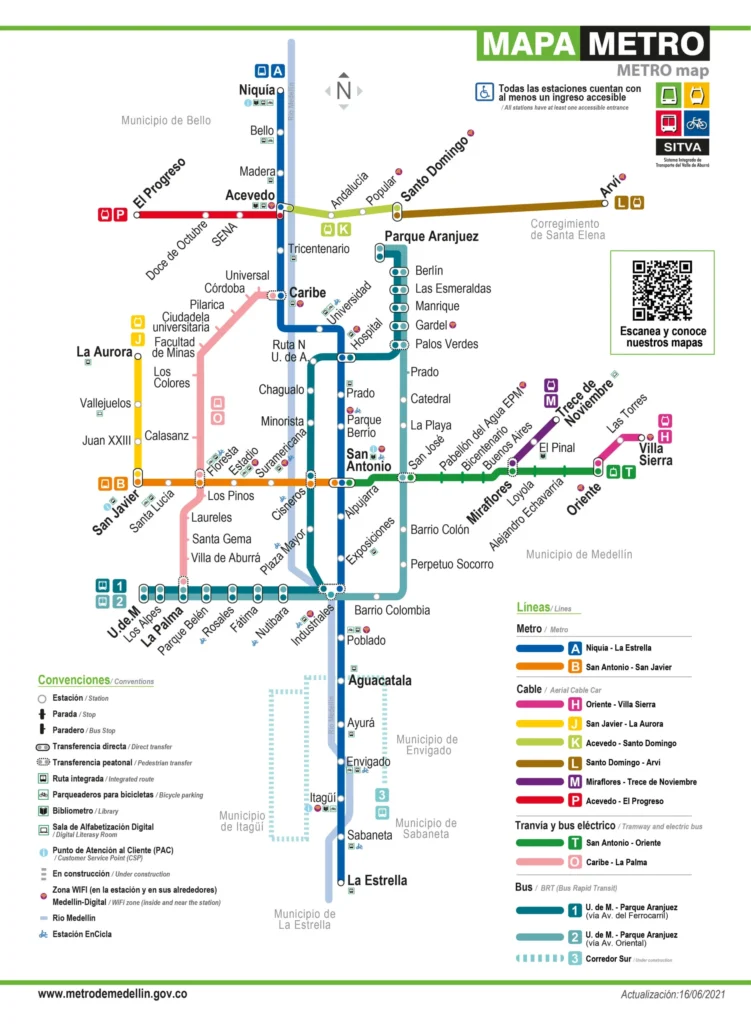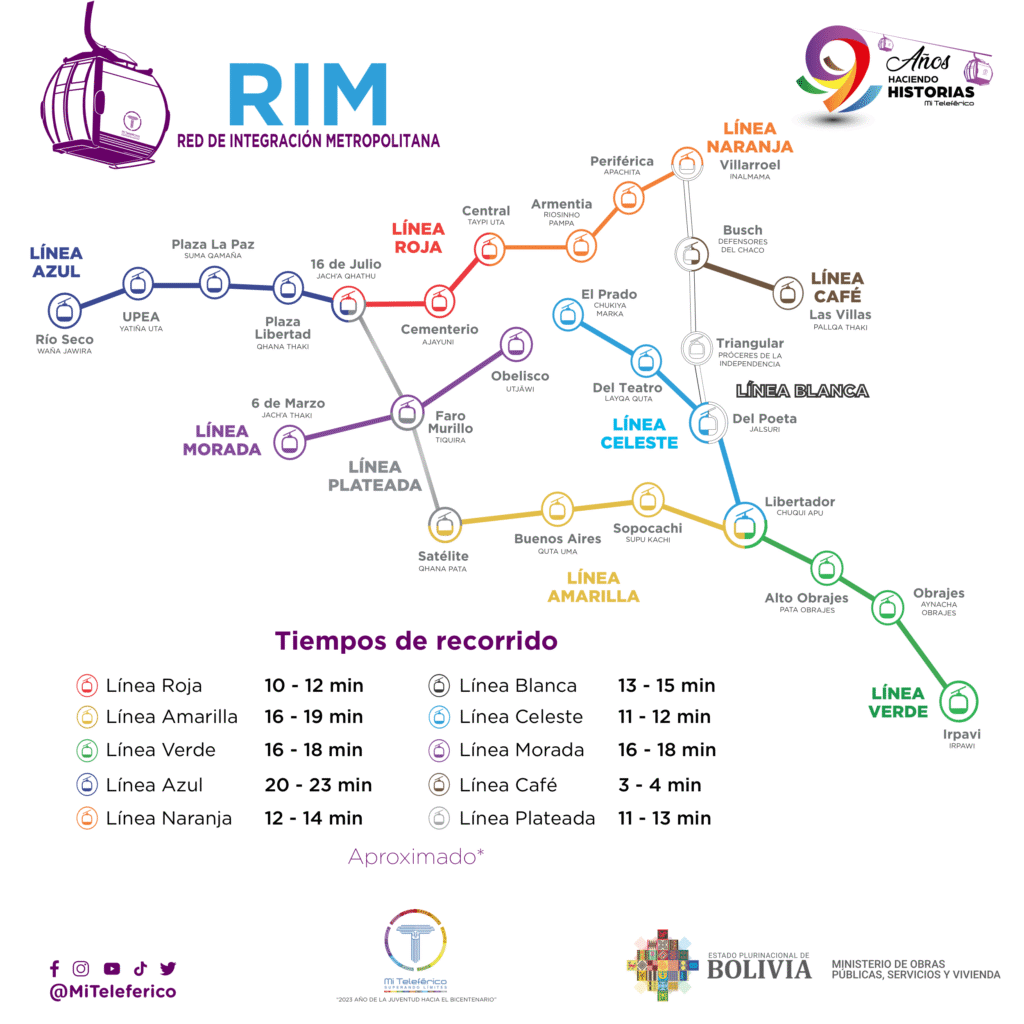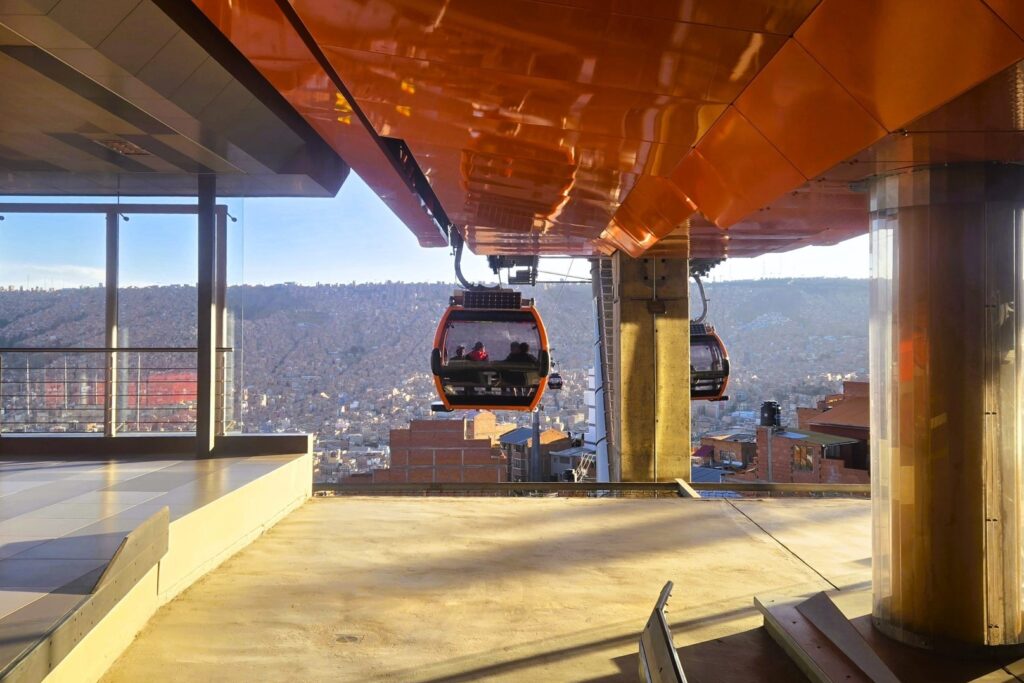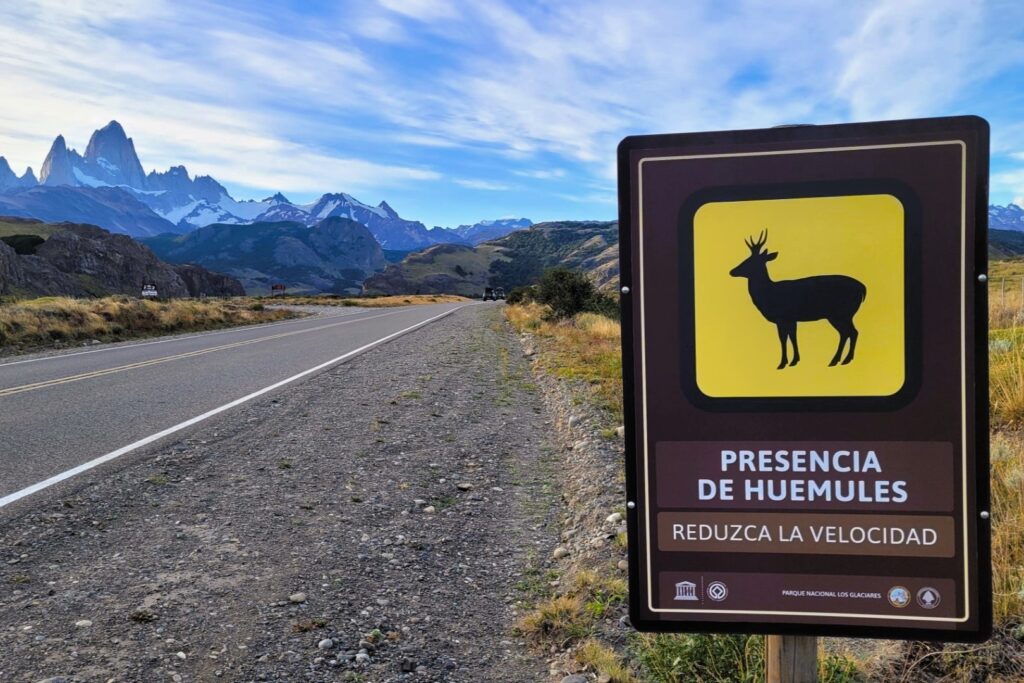A Revolution in Public Transportation
Medellín and La Paz, two cities defined by their unique geographies, have turned their challenging landscapes into opportunities for innovative urban transportation solutions to improve mobility and tackle poverty reduction. While Medellin stretches linearly along a fertile tropical valley bounded by mountains, La Paz sits in a bowl-shaped valley amidst dramatic topography.
In both cities, poverty is concentrated in the inaccessible high-altitude neighborhoods, where makeshift settlements spread onto higher ground due to a lack of space. Meanwhile, employment opportunities, educational facilities, and healthcare access are concentrated in the lower, wealthier areas.
Medellín is home to 3 million residents living at around 1,500 meters above sea level, making it a perfect location for a mild, spring-like climate all year round. Towering tropical plants dominate parts of the wealthier neighborhoods, and a strong midday sun warms up the city’s many rooftops.
La Paz, the highest capital city in the world at an elevation of 3,650 meters, has fewer than a million residents. However, when including the nearby city of El Alto, which sits at a breathless 4,000 meters, the total population exceeds 2 million. The higher areas are colder, with temperatures dropping 7 degrees Celsius for every 100 meters of ascent, which pushes wealthier populations to settle in the more temperate lower elevations.
El Alto houses the poorest residents on a flat altiplano, and its urban sprawl is only limited by a slowing pace of urbanization. At the city’s edge, buildings overlook a steep 600-meter drop to La Paz below. Remarkably, stairs wind up the steep walls of the precipice, leaving El Alto’s residents either exceptionally fit or nearly dead from the daily commute to the wealthier and more touristy La Paz.
Medellín: Pioneering Urban Mobility
Medellín, known as Colombia’s “City of Flowers,” has transformed its urban landscape with groundbreaking transportation solutions. Founded in 1616, the city grew rapidly in the late 19th century with the arrival of the railroad, promoting textile and agricultural industries. Despite a period of violence linked to drug cartels in the late 20th century, Medellín has reinvented itself through urban renewal.
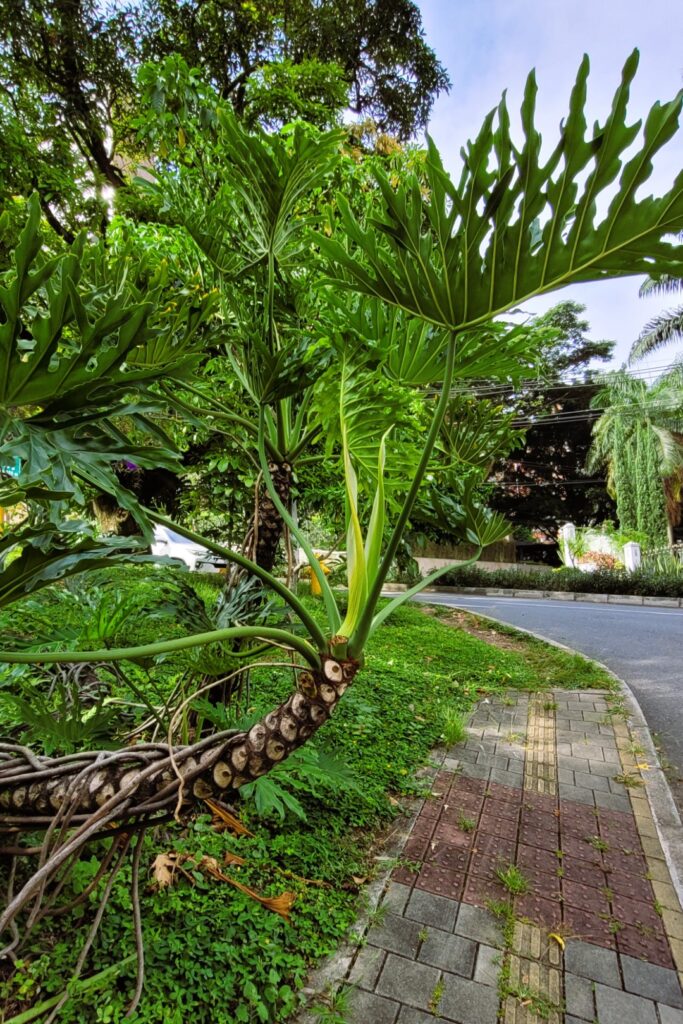
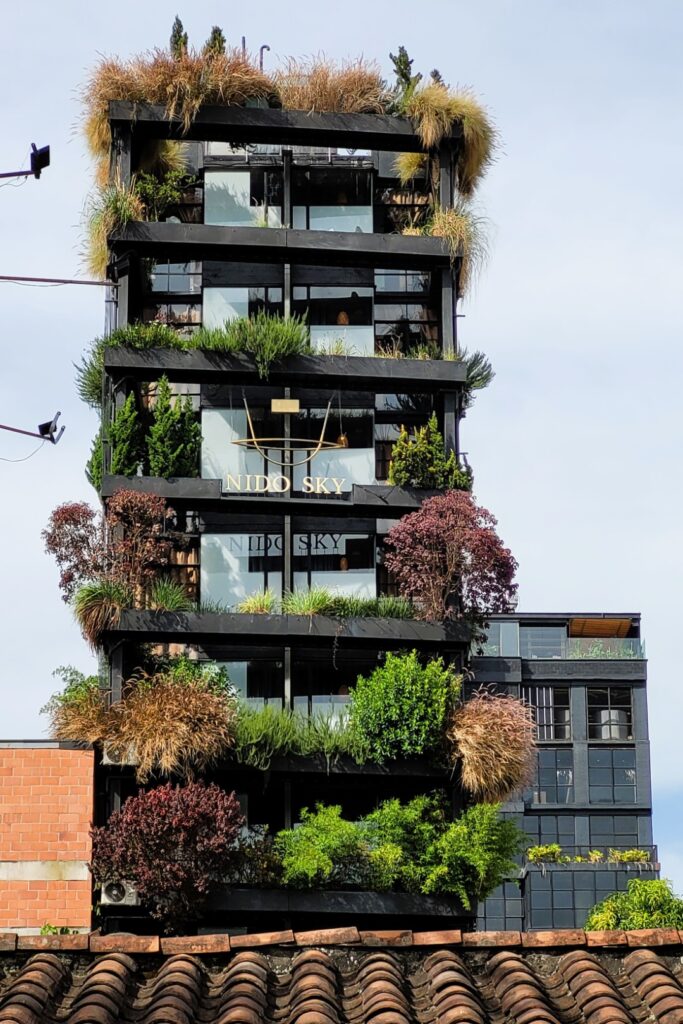
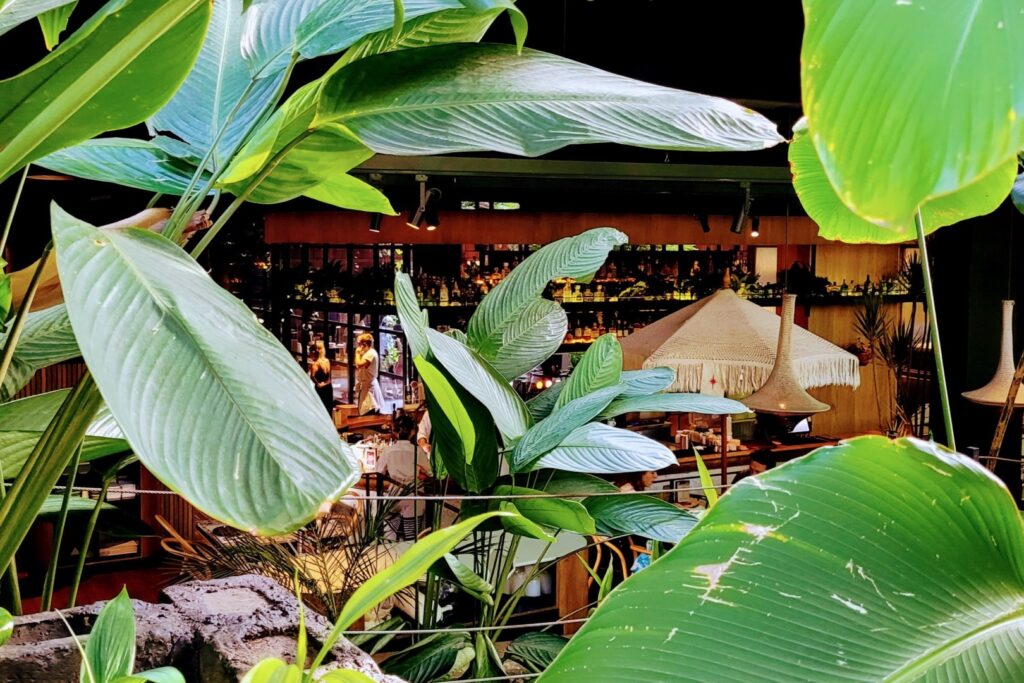
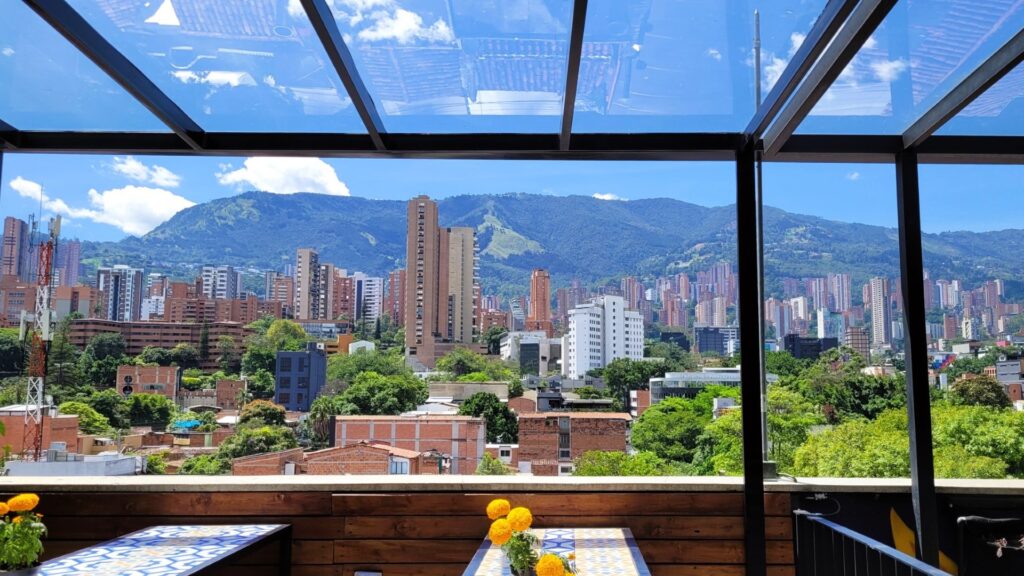
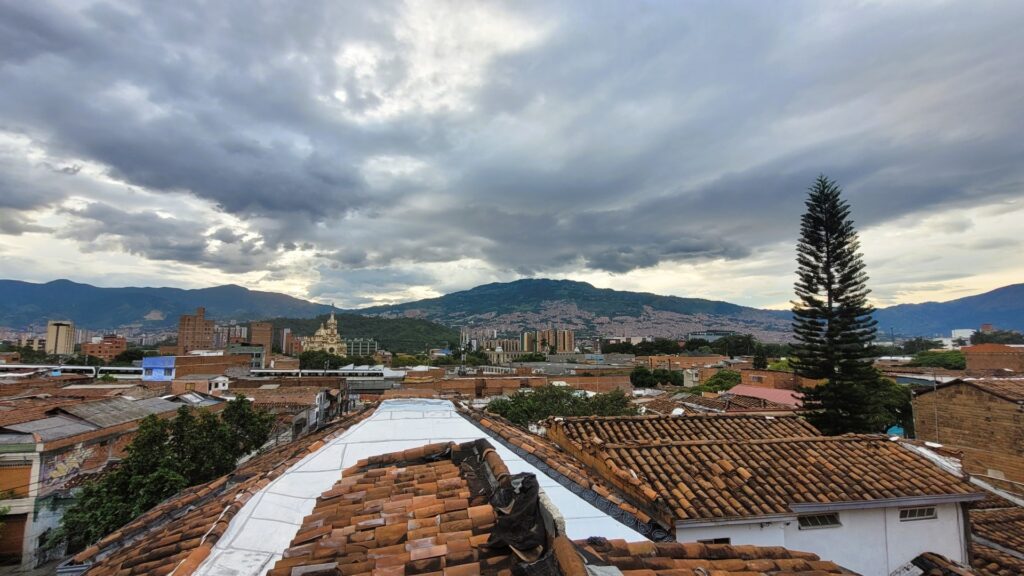
In 1995, Medellín introduced Colombia’s first elevated metro system and in 2004, pioneered the Metrocable, the world’s first public cable car network, connecting hillside neighborhoods to the city center. Operated by the Medellín Metro Network, these cabins travel at 18 km/h, easing the commute for up to 3,000 passengers per hour.
The introduction of outdoor escalators in Comuna 13, a once-troubled area, have also improved access for residents living on steep hills. The area has since become a tourist destination, with colorful streets, music, bars, and restaurants, though not all residents welcome the change.
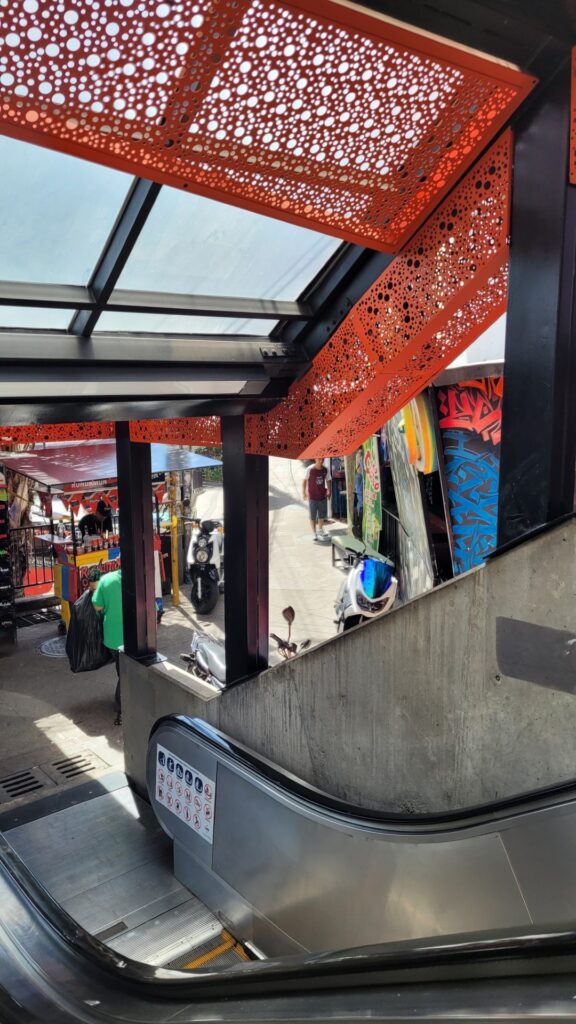

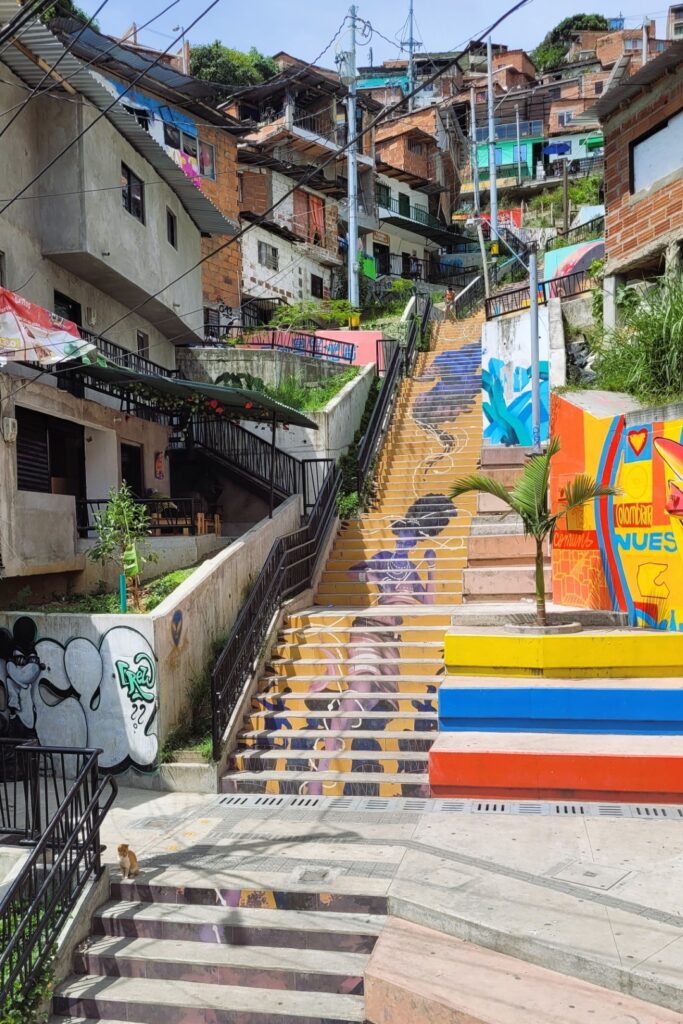
Six cable car lines branch off from the main metro line into the heights on either side, reaching the once-isolated neighborhoods of Villa Sierra, La Aurora, Santo Domingo, Arví, Trece de Noviembre, and El Progreso.
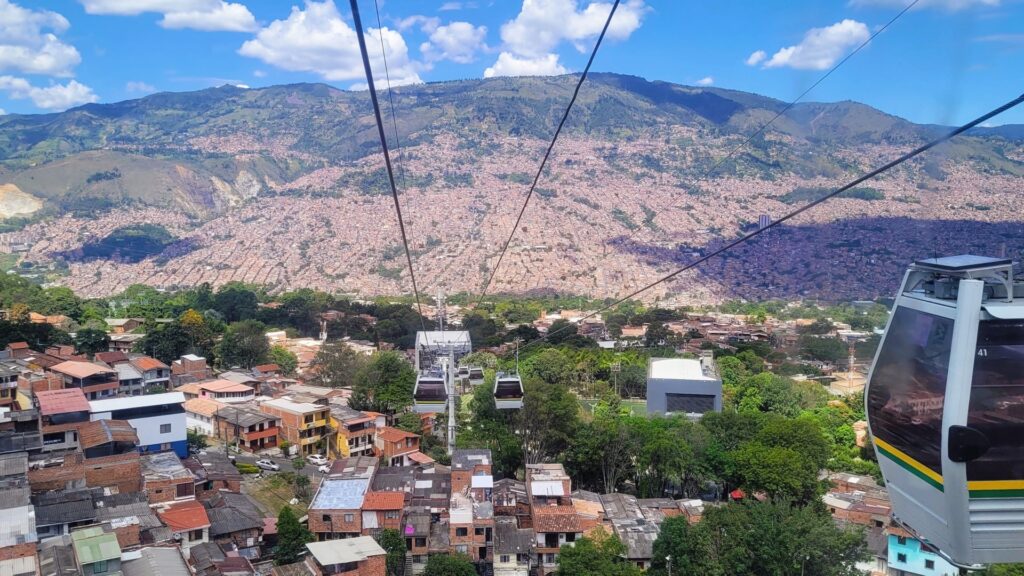
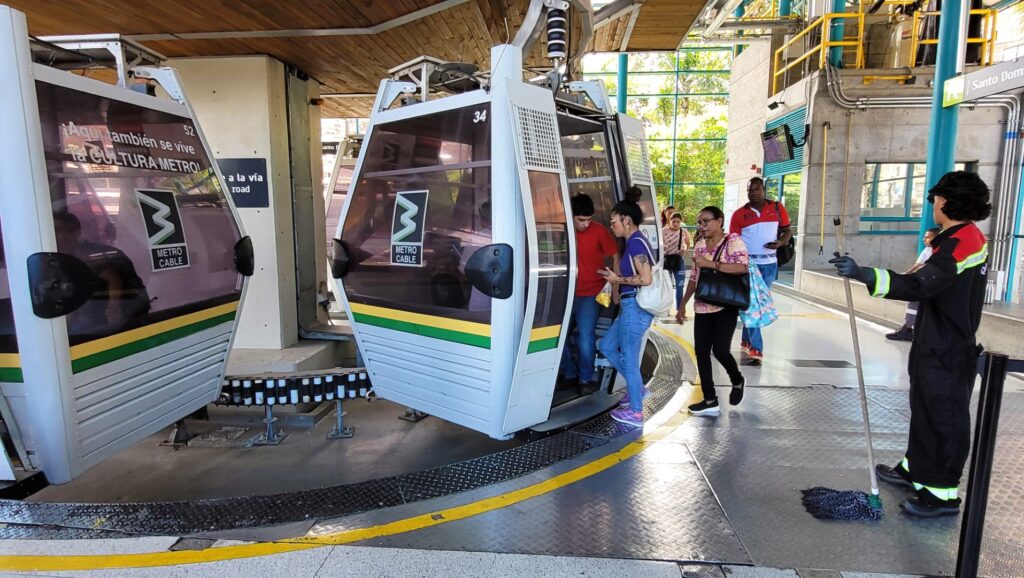
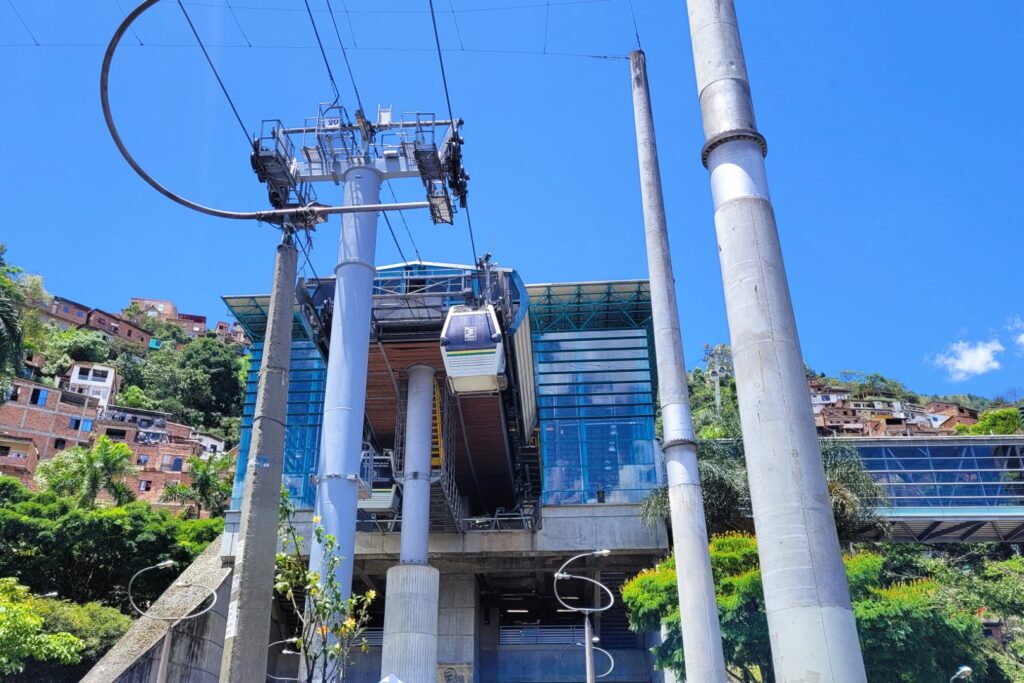
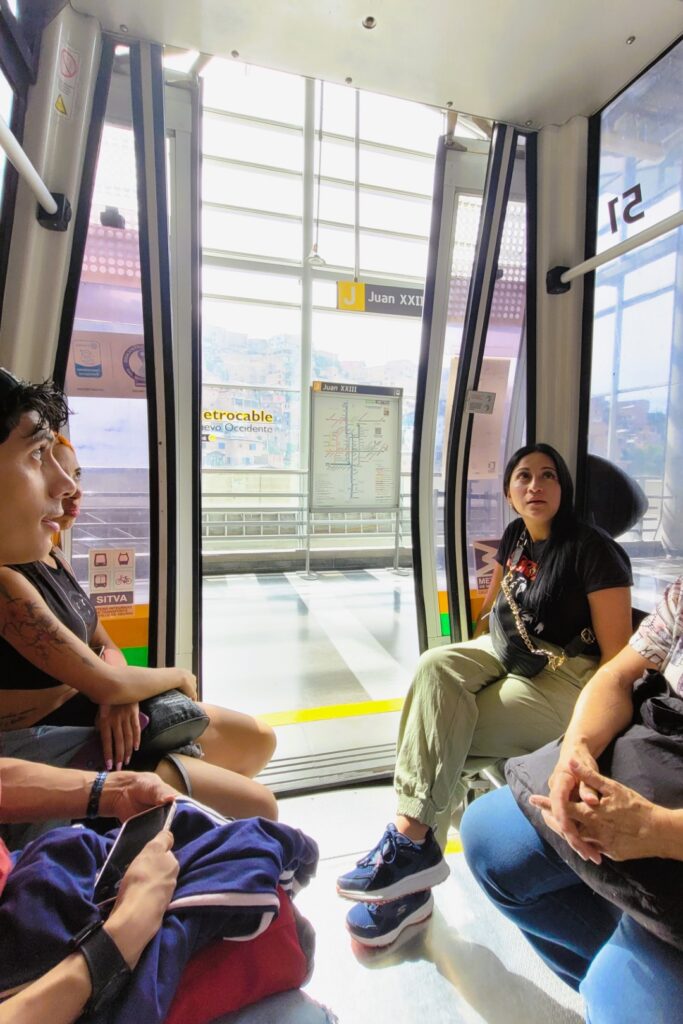
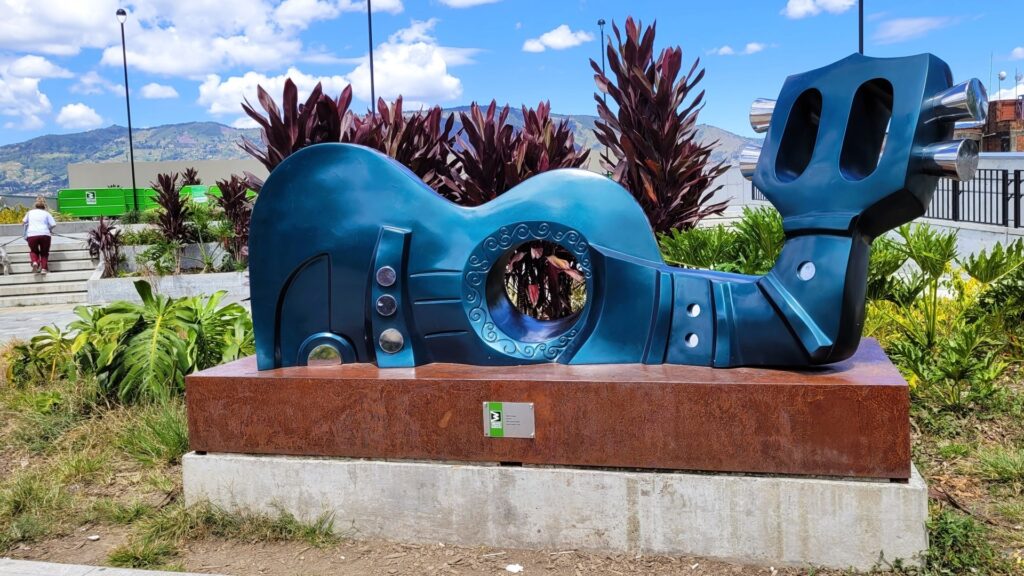
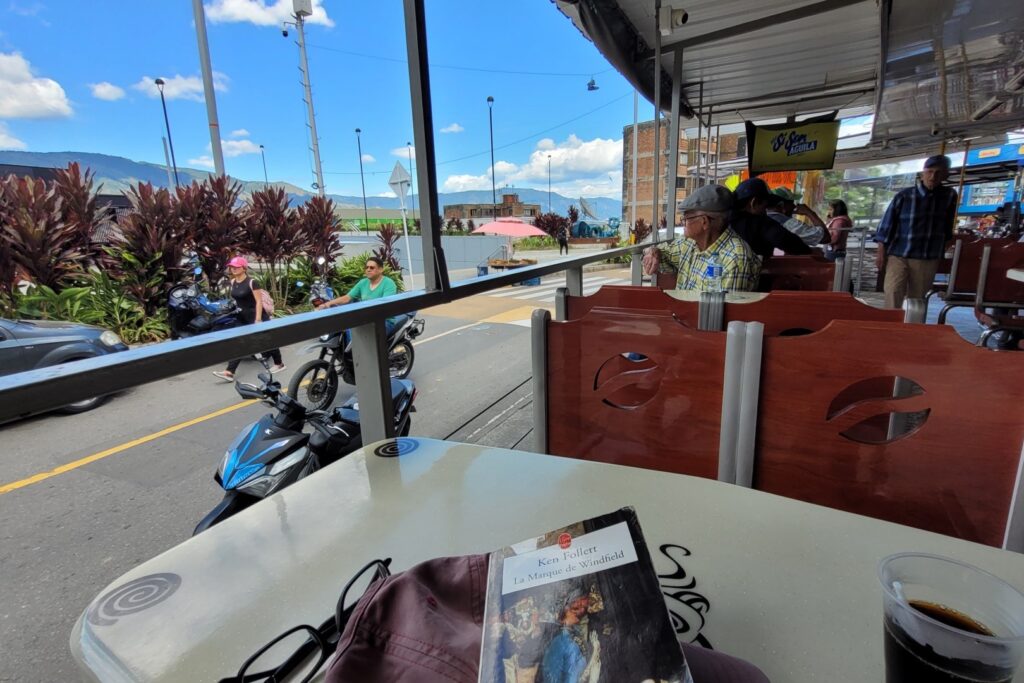
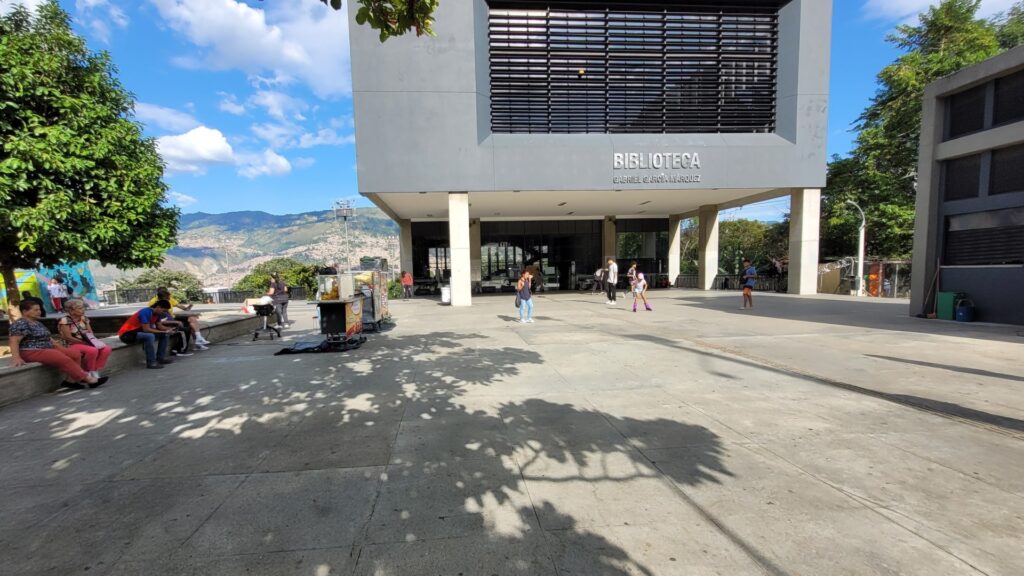
La Paz: Navigating the Heights
La Paz presents even more challenges in infrastructure development than Medellín with its extreme elevations, rugged terrain, canyon, and distinct altitudinal zones. Arriving by bus from any southeastern cities via El Alto offers an unforgettable experience, as you descend along the twisting highway on the edge of the precipice, gazing into the bowl that cradles the city of La Paz.
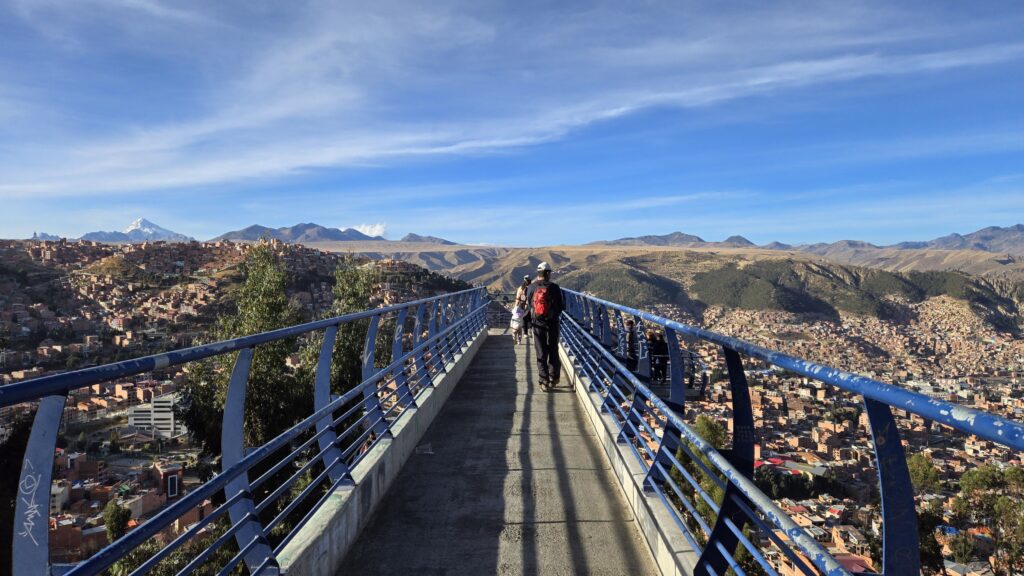

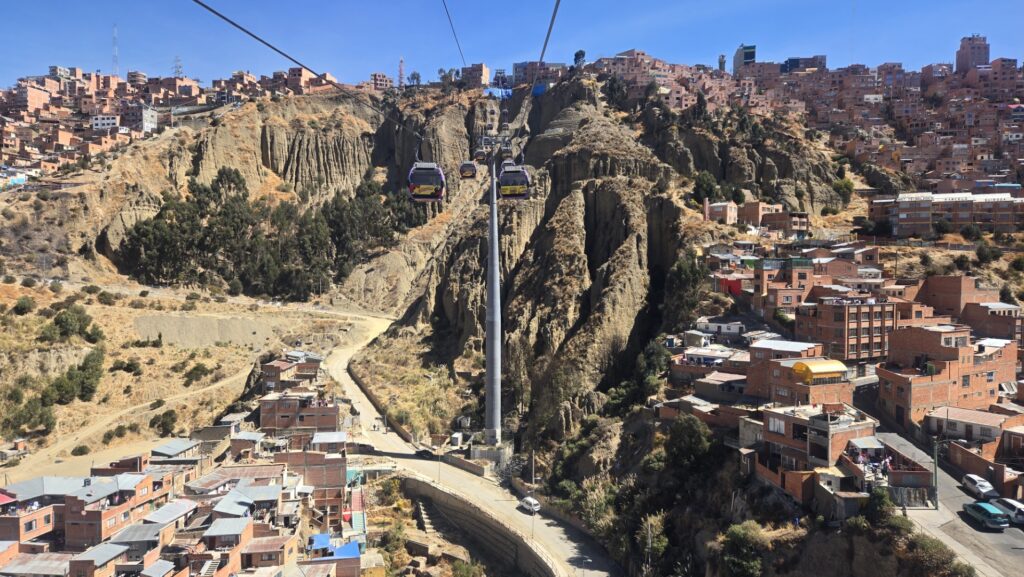
In 2014, La Paz inaugurated Mi Teleférico, the world’s longest and highest urban cable car network. This system revolutionized public transportation by connecting La Paz with its higher neighboring city of El Alto, reaching altitudes of up to 4,2000 meters. Mi Teleférico features several lines, each with its own color: orange and red, blue and celeste, white and silver (to start with the hardest to differentiate), café, purple, green, and yellow. Each line is well identified in the urban fabric with equally brightly colour-coded stations.
La Paz’s cable car network not only connects previously inaccessible neighborhoods but also serves as an alternative to the metro system, given the city’s uneven terrain. Each line provides unique views and experiences: the Red, Purple, and Yellow Lines traverse the impressive divide between lower La Paz and higher El Alto, offering dramatic drops on the return trip. The White and Blue Lines travel above major boulevards in La Paz and El Alto respectively, providing comfortable views of city activities, traffic, and the lively Sunday market in El Alto. The Celeste Line winds through a canyon to reach the town center, while the Green Line extends from the southern part of La Paz to the lower-altitude Irpavi.

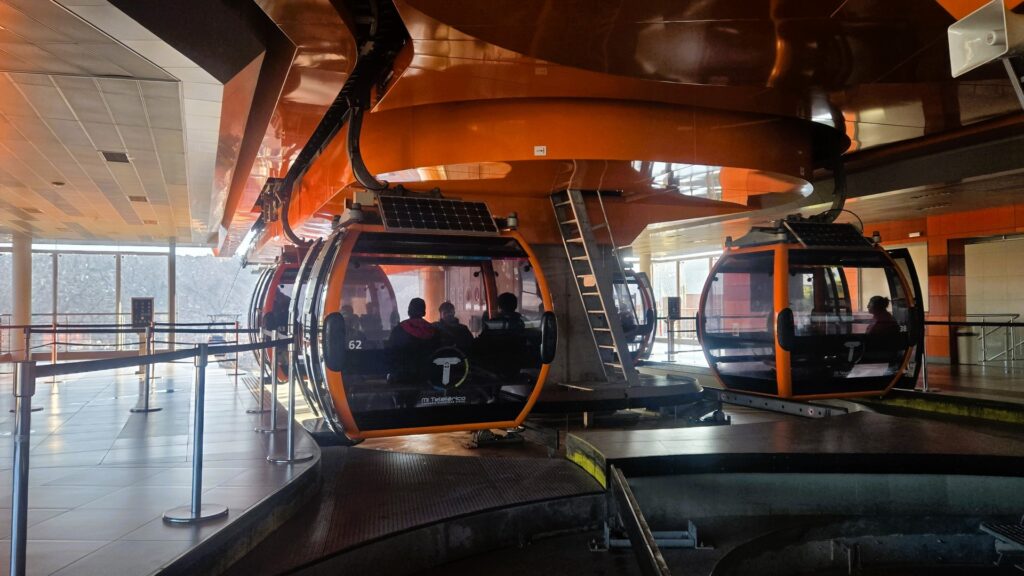
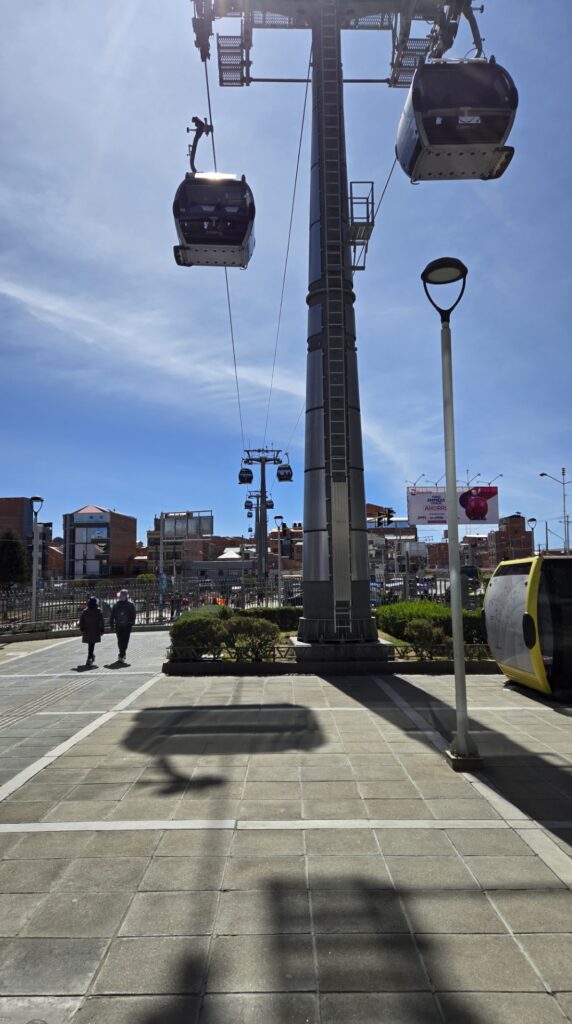
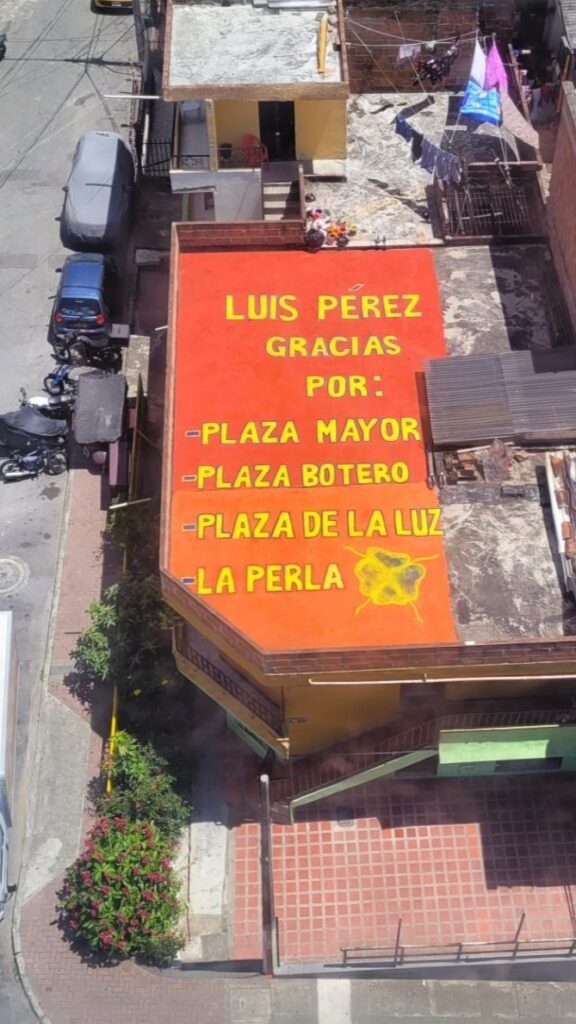
Conclusion: An eco-friendly urban transport
Medellín’s Metrocable and La Paz’s Mi Teleférico are prime examples of how innovative transportation systems can transform cities, boost mobility, and drive economic growth. In addition to alleviating traffic congestion, reducing travel time, and providing a safe, reliable, scenic, and eco-friendly mode of transportation, the cable car system does not emit any environmental or noise pollution. Small businesses and markets have flourished around the cable car stations, creating jobs and boosting local economies.
Riding these megastructures, it is impressive how smoothly the system operates. The design allows passengers to board and disembark the cable cars without the system stopping, though transitioning between the moving platform and the stationary one can be a bit disorienting. During rush hours, assistance is always available, with staff stationed at each stop to ensure safety. Remarkably, even elderly Quechua women with their loads navigate the system with ease.
